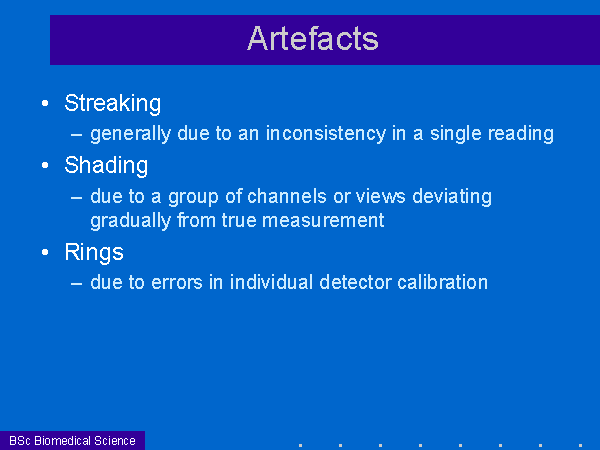

Both spellings are etymologically justifiable, and both are hundreds of years old in English. Offending artifacts may obscure, distort, or completely misrepresent the true underlying electrophysiological signal sought.Artefact is the British spelling of the noun meaning, primarily, an object shaped by human workmanship, especially one of historical or archaeological interest. These artifact signals may stem from, but are not limited to: light sources monitoring equipment issues utility frequency (50 Hz and 60 Hz) or undesired electrophysiological signals such as EMG presenting on an EEG-, EP-, ECG-, or EOG- signal.

In medical electrophysiological monitoring, artifacts are anomalous (interfering) signals that originate from some source other than the electrophysiological structure being studied. When these assumptions are not maintained, artifacts occur. and acoustic energy of an echo is uniformly attenuated.

These are: echoes originate only from the main ultrasound beam (while there are side lobes and grating lobes apart from the main ultrasound beam) echoes returns to transducer after a single reflection (while an echo can be reflected several times before reaching the transducer) depth of an object relates directly to the amount of time for an echo to reach the transducer (while an echo may reflect several times, delaying the time for the echo return to the transducer) speed of ultrasound in human tissue is constant, echoes travel in a straight path.

In ultrasound imaging, several assumptions are made from the computer system to interpret the returning echoes. Physicians typically learn to recognize some of these artifacts to avoid mistaking them for actual pathology. These artifacts may be caused by a variety of phenomena such as the underlying physics of the energy-tissue interaction as between ultrasound and air, susceptibility artifacts, data acquisition errors (such as patient motion), or a reconstruction algorithm's inability to represent the anatomy. In medical imaging, artifacts are misrepresentations of tissue structures produced by imaging techniques such as ultrasound, X-ray, CT scan, and magnetic resonance imaging (MRI). This prediction is a statistical artifact, since it is spurious to use the model when the percentage of citizens making over $50,000 is so high, and gross error to predict an approval rating greater than 100%. For instance, imagine a hypothetical finding that presidential approval rating is approximately equal to twice the percentage of citizens making more than $50,000 annually if 60% of citizens make more than $50,000 annually, this would predict that the approval rating will be 120%. Such an artifact may be called a statistical artifact. In econometrics, which trades on computing relationships between related variables, an artifact is a spurious finding, such as one based on either a faulty choice of variables or an over-extension of the computed relationship. In microscopy, visual artifacts are sometimes introduced during the processing of samples into slide form. In computer science, digital artifacts are anomalies introduced into digital signals as a result of digital signal processing. In natural science and signal processing, an artifact or artefact is any error in the perception or representation of any information introduced by the involved equipment or technique(s). Diffraction spikes and the Airy disk are optical artifacts caused by the diffraction of light through the aperture of an optical system.


 0 kommentar(er)
0 kommentar(er)
